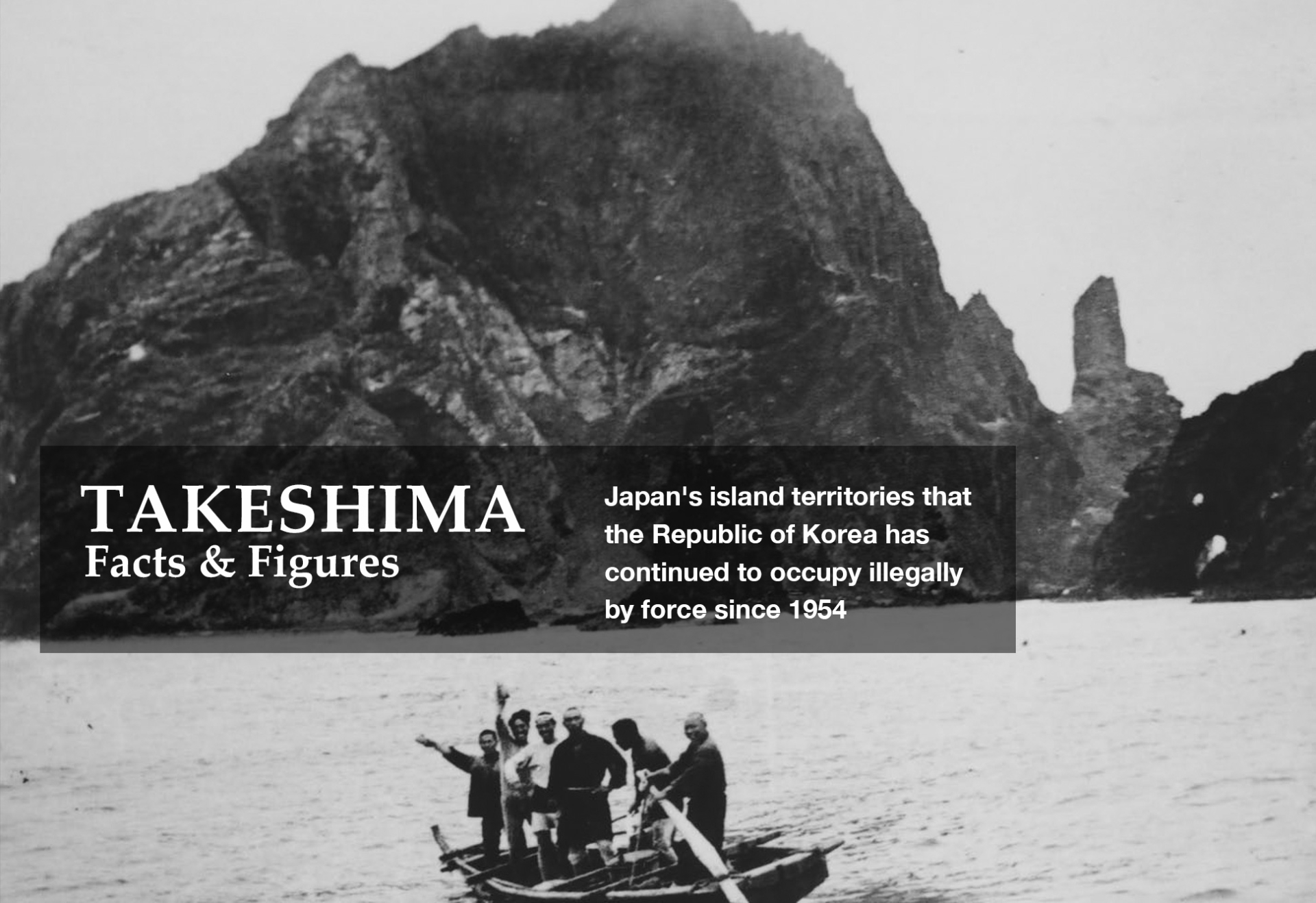Takeshima Facts & Figures
-
Jun 02, 2017
overview

The Government of Japan officially named the Islands “Takeshima” and decided that the Islands would come under the jurisdiction of the Oki Island branch office of the Shimane Prefectural Government by Cabinet Decision on January 1905. The Cabinet Decision reconfirmed Takeshima as Japanese territory. Japan has exercised its sovereignty over Takeshima peacefully and continuously since then.
The Takeshima Facts & Figures(F&F)site provides facts that are based on the official documents and research reports to enhance the understanding that Takeshima has historically, internationally, and consistently been an inherent part of the territory of Japan.

*Click the links to go to the individual pages.
1. Sovereignty: Legal and Historical Aspects
Historical documents and references on Takeshima and a look at the territory from domestic and international legal perspectives. …Read
2. Geography
The location, topography, geological features, and other details on the islands. With information from a range of survey reports.…Read
3. Marine and Climate Science
Oceanographic and climatic information on the islands and their surrounding waters,…Read
4. Ecosystems
Information from surveys of Takeshima flora and fauna and examinations of ecological issues the islands face.…Read
5. Industry
Facts mainly on the development of the islands by private citizens.…Read
6. Environment
Environmental information on Takeshima from the standpoint of human settlement on the islands.…Read
7. Supplementary Information
Related and relevant sources of additional information on the islands.…Read


 RSS
RSS

Info Library
Japan's Island Territories
Senkaku Islands Facts & Figures
Takeshima Facts & Figures
Northern Territories Facts & Figures